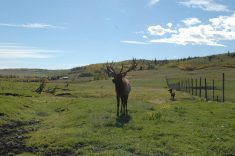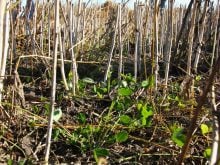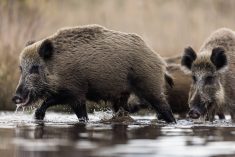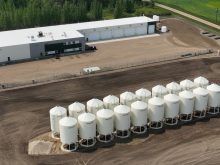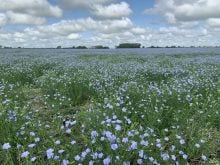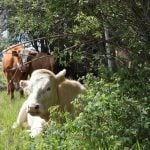If the pulse industry is seeking a promoter of fababeans, they couldn’t find a more enthusiastic spokesperson than Armand Friesen.
“I’m certainly open to talking about fababeans. Especially now with the fertilizer and feed costs, it’s a tremendous crop to get into,” said Friesen.
He is growing a half section of the legumes this year on his farm near Grosse Isle, Man., 20 kilometres northwest of Winnipeg.
Friesen is especially excited about the beans’ potential for livestock feed.
“I have a feeling that where this is going to take off, is for guys who produce their rations at home,” he said. “Returns are twofold (for hog producers) … in that you don’t have to import your soy meal and you can control your ration a little closer, because you’ve got the product at home.”
Read Also
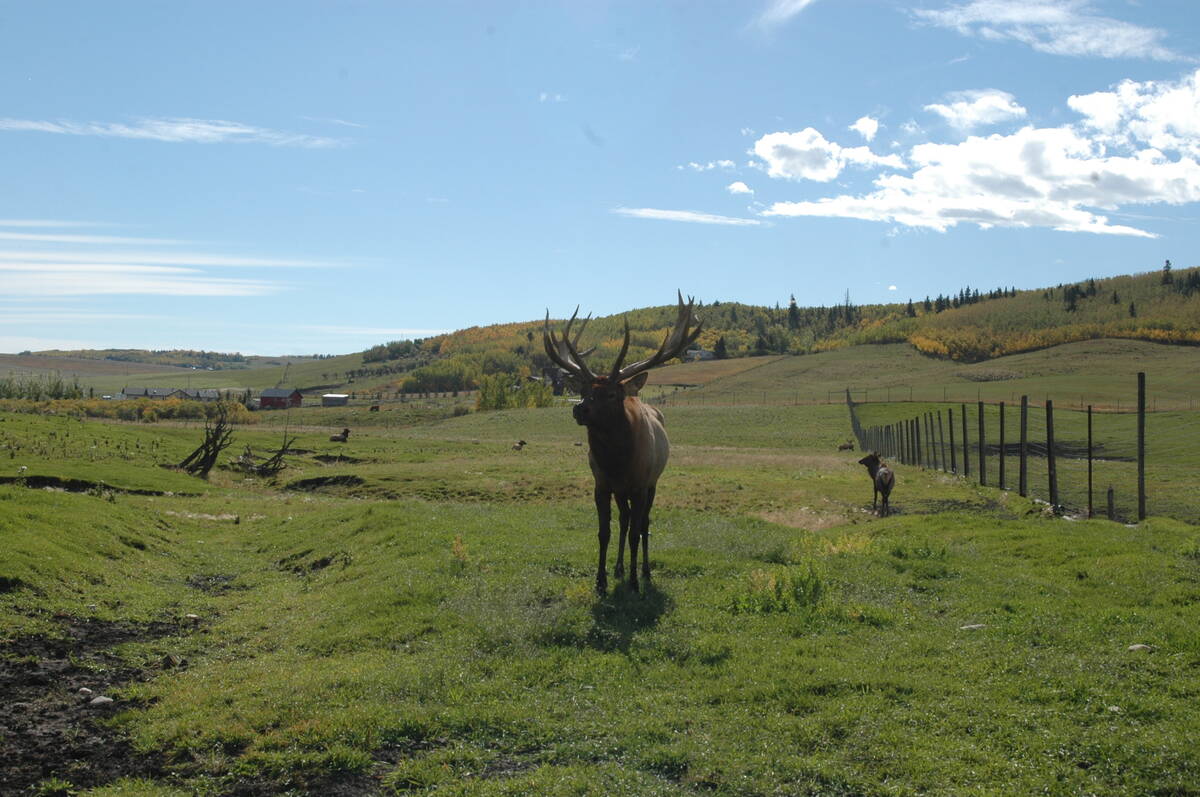
Feds propose overhaul of chronic wasting disease control program
Chronic Wasting disease control program getting updated by Canadian Food Inspection Agency with feedback encouraged from producers.
However, conventional fababeans are not a great option for animal feed because the beans contain tannin, primarily in their skin. Many humans like the taste of tannin, but pigs cannot tolerate the bitterness.
Consequently, researchers are working to develop a zero tannin variety that’s suitable for hogs, and one location with ongoing trials is in the Red River Valley.
“The reason we’re looking at the variety trial is because there is a great interest in having something that can be incorporated into livestock feed and used here in Manitoba, rather than being exported,” said Tammy Jones, diversification specialist with Manitoba Agriculture, during a crop tour at James Richardson International’s Kelburn Farm, 10 km south of Winnipeg.
This is the second year of the Manitoba evaluation trials on fababeans at Kelburn Farm.
Last year, a hot, dry summer prevented researchers from getting sufficient yield data on zero tannins. This year’s plots are looking better, Jones said, as of the middle of July.
Manitoba producers grow the largest share of fababeans on the Prairies, with most planted in the dark soil zones of the Red River Valley, as well as around Dauphin and in Fisher Branch in the Interlake region. According to Manitoba Pulse Growers, 6,000 acres were planted in the province in 2008, down from 8,000 acres in 2007. Almost all of those acres are conventional fababeans with tannin. They are sold to North American soup makers or exported to the Middle East.
Promoters of fababeans are hoping those acres will double or triple if zero tannin varieties are developed and if the nitrogen fixing ability of fababeans encourages more producers to get on board.
“Sustainable agriculture needs something that can fix nitrogen, and fababeans have demonstrated that they definitely can do that,” said Jones.
Friesen estimated that for every 1,000 pounds of harvested fababeans, the plants return 10 to 15 lb. of nitrogen to the soil.
“They’re the highest nitrogen fixer of all the pulses that I know of,” he said.
In addition, the fababean is a hardier plant than other pulses such as peas.
“They don’t have the same disease issues … and can stand more wet or dry conditions,” said Jones while pointing to the white-flowered faba plant growing on a plot at Kelburn Farm.
“I’ve found that they are quite resistant to just about any insect,” said Friesen. “Grasshoppers will affect them, but that’s their crop of last choice because the leaves are bitter.”
Even with all its positive attributes and the potential of zero tannin varieties, the bean’s size, about double a typical pea, has been challenging for plant breeders.
“It (the seed) has to fit the farming system, it has go through air seeders,” said Bert Vandenberg, a plant breeder at the University of Saskatchewan’s Crop Development Centre. “Smaller is better, because it’s a little cheaper.”
Vandenberg said the CDC started work on zero tannin fababean varieties four to five years ago, and he’s hopeful a line the centre is testing this year could make it as a variety.



